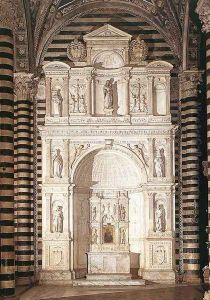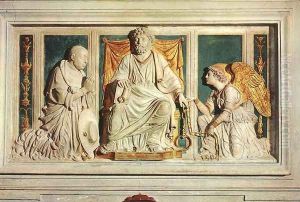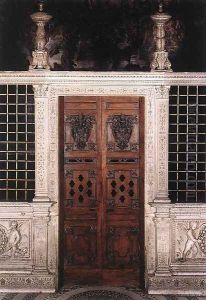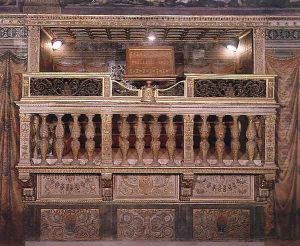Andrea Bregno Paintings
Andrea Bregno was an influential Italian sculptor and architect who played a significant role in the development of Roman Renaissance architecture and sculpture. Born in 1418 in Osteno, a small town near Como in Lombardy, Bregno was part of a family of stonecutters and masons, which likely contributed to his early training in the sculptural arts. He moved to Rome around the mid-15th century, where he became deeply involved in the burgeoning Renaissance art scene.
Bregno's work was characterized by its classical inspiration and its harmonious proportions. He is best known for his elegant and refined relief sculptures, altars, and funerary monuments. His style reflects the influence of early Renaissance masters such as Donatello and reflects a transition from the Gothic style to the Renaissance emphasis on antiquity and humanism. Bregno's work was in high demand among the elite and ecclesiastical patrons of his time, and he contributed significantly to the architectural landscape of Rome.
He was particularly celebrated for his craftsmanship in marble, and many of his sculptures feature a meticulous attention to detail and a smooth, polished finish that was highly prized in his day. One of his most notable contributions to Renaissance art was his work on the tomb monuments, which often included a combination of architectural elements and sculptural figures that together created a harmonious and dignified ensemble. He worked on the tombs of Cardinal Louis d'Albret and Cristoforo della Rovere, among others.
Bregno's influence extended beyond his own creations. He was a central figure in the Roman artistic community and his workshop became a training ground for other prominent artists, including the young Michelangelo who is believed to have studied there briefly. Bregno's integration of classical motifs with contemporary design trends helped set the stage for the High Renaissance in Rome.
Andrea Bregno died in Rome in 1506. His legacy lived on through his many sculptural works that still adorn Roman churches and his influence on the generations of artists that followed. His contributions to the architectural and sculptural vocabulary of the Renaissance have been recognized by art historians as essential to the development of the period's aesthetic and cultural advancements.



